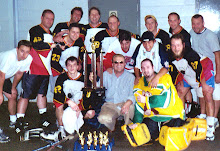 WHAT IS KERATOCONUS
WHAT IS KERATOCONUS
About 1/ 2000 people will develop keratoconus. Most people will have a mild or moderate form of the disease. Less than 10% of keratoconics will develop the most severe form. It typically is diagnosed in the late teens or twenties. However, many people have been diagnosed in their mid to late thirties; this is usually a more mild form of the disease. It is common for one eye to precede faster than the other and the eyes may go for long periods of time without any change and then change dramatically over a period of months.
A corneal transplant may be needed when vision cannot be corrected satisfactorily using other procedures such as contact lenses and glasses, or if painful swelling cannot be relieved by medications. When the cornea becomes "opaque" or gray/white (see uper photo) from disease or injury or painful from swelling or blisters, it no longer functions as the "clear window" of the eye. It then acts more like a "soapy" window which you cannot clearly see through. Even if the rest of the eye is healthy, a cloudy cornea will obstruct clear vision. Of all the transplant surgery done today (hearts, lungs, kidneys, etc.) corneal transplants are by far the most common and successful.

A corneal transplant, also known as a corneal graft, or as a penetrating keratoplasty, involves the removal of the central portion called a button (see right photo) of the diseased cornea and replacing it with clear healthy donor button. The donor cornea button is sewed into the defect created by removal of the diseased cornea. Tiny hair-thin sutures or stitches are used to anchor the graft to the host tissue.
The postoperative recovery is a long one, but in most cases, resumption of normal activities may occur soon after surgery with some reasonable limitations. For example, lifting heavy objects or strenuous exercise must be avoided until directed otherwise by the physician. Until the eye has healed, glasses or an eye shield must be worn to protect the eye. The sutures used to sew the donor cornea in place are barely visible and do not cause pain. It is normal for the eye to feel scratchy or irritated for the first few days following surgery. As the cornea heals, some of the stitches used to sew the donor tissue into place are removed. This can be done quite easily in the doctor's office. The final improvement in vision is gradual and occurs six to twelve months post-operatively.
 Last month my father-in-law, Rick McClure, had the chance to go to historic Wrigley Field and partake in a Chicago Cubs vs Milwaukee Brewers game.
Last month my father-in-law, Rick McClure, had the chance to go to historic Wrigley Field and partake in a Chicago Cubs vs Milwaukee Brewers game.












